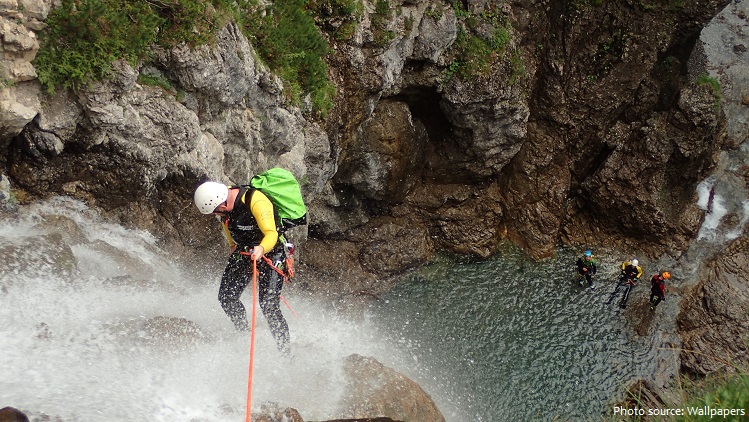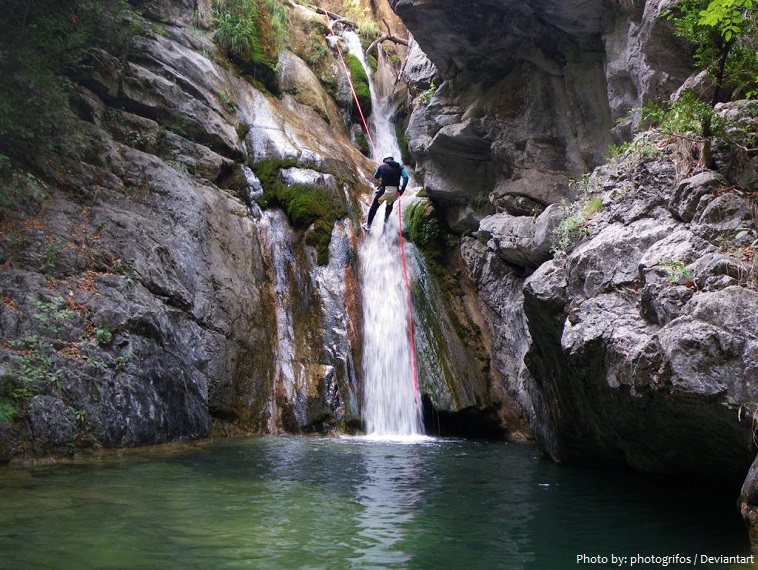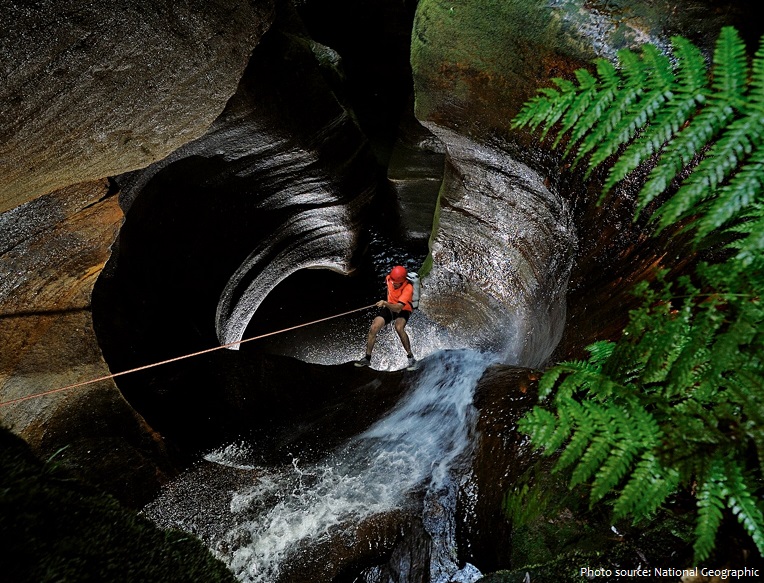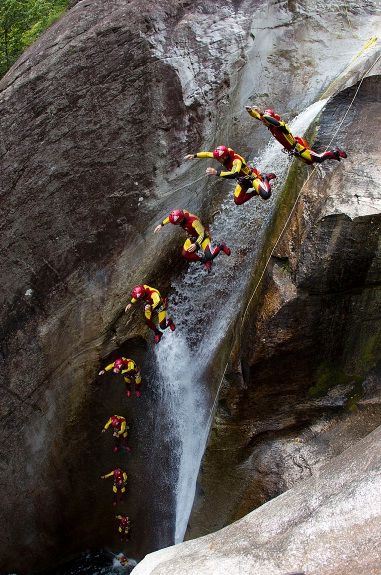
Canyoning also known as canyoneering in the United States, kloofing in South Africa is an extreme sport.
It is a type of mountaineering that involves travelling in canyons using a variety of techniques that may include other outdoor activities such as walking, scrambling, climbing, jumping, abseiling (rappelling), and
swimming.
Canyoning is frequently done in remote and rugged settings. It can involve navigational and other wilderness survival skills, though most adventurers practice the sport with certified instructors.
The mountain canyons form narrow gorges with numerous drops, smooth sculpted walls, and spectacular waterfalls. Most canyons are cut into limestone, sandstone, granite, or basalt.

Canyons can be very easy to descend or extremely difficult. A wide variety of canyoning routes are found throughout the world, and canyoning is enjoyed by people of all ages and skill levels.
Canyoning gear includes climbing hardware, static or semi-static ropes, helmets, wetsuits, and specially designed shoes, packs, and rope bags. While canyoneers have used and adapted climbing, hiking, and river running gear for years, more and more specialized gear is invented and manufactured as canyoning popularity increases.
There are many places in the world that can be a perfect spot for canyoning. The famous places around the world, namely Zion National Park (USA), Kawasan Falls (Philippines), Blue Mountains (Australia), Jalbire (Nepal), and many places in the world’s biggest archipelago country, Indonesia.

Canyoning is one of the oldest activities in nature but one of the newest extreme sports in the world.
Canyoning started in the late 1800’s or early 1900’s, in the eagerness of the adventurers of reaching the most hidden places on the geography. A desire to conquer not just the highest peaks, but also the less accessible places in the accessible world.
The first known use of the term “canyoneering” was by a member of John Wesley Powell’s expedition down the Colorado River by boat in 1869. The term is still used in reference to white water rafting in the Grand Canyon.
The sport developed independently – in Europe by cavers in the 1930s, in Australia by bushwalkers in the 1950s, and in the US by hikers, climbers and paddlers in the 1940s and 50s. The independent development is evident in the different techniques and equipment used in each area.

Canyoning as more ‘light activity’ and suitable to become also a sport and tourist attraction begins in Spain and France in the early 80s. The systematic exploration of the gorges in the French and Spanish Pyrenees lead to the mapping of the canyon discovering wonderful places that seemed difficult to achieve and that now could be proposes in tourist optics. That’s why start to begin a worldwide community of ‘canyonisti’: from the old continent to the United States until all the world. In Italy the beginning of the canyoning is related to the birth in 1998 of the AIC (Italian Canyoning Association) that gave impetus to the comprehensive development of this adrenaline sport.
Many of the canyons used today for entertainment were once traversed by native people. Those people were likely wearing primitive clothing, had bare feet, sandals or moccasins. Ropes used generations prior involved scaling challenging vertical descents using simply hemp and manila ropes. It’s amazing to think of the courage they must have had!
It makes sense that canyoneering in the US is the most popular in the “canyon country” of Utah and Arizona, primarily in the areas that lie within a physiographic province known as the Colorado Plateau. Originally named the “Colorado Plateaus” by explorer John Wesley Powell, the Plateau is in fact a huge basin surrounded by highlands and filled with plateaus.
Canyoning in the United Kingdom has gained in popularity over recent years. In the UK, Wales, Scotland, Cumbria and Yorkshire and some areas of Cornwall are recognized as the prime locations for this activity.
Canyoning is common in Australia in the many sandstone slot canyons of the Blue Mountains National Park, known for their technical abseil starts and lack of fast flowing water.
In Vietnam you can try in Dalat, its call “Dalat Canyoning Challenge”, organized by Viet Challenge Tours. In Japan (sawanobori) and Taiwan canyoning is called river tracing and typically involves traveling upstream.
